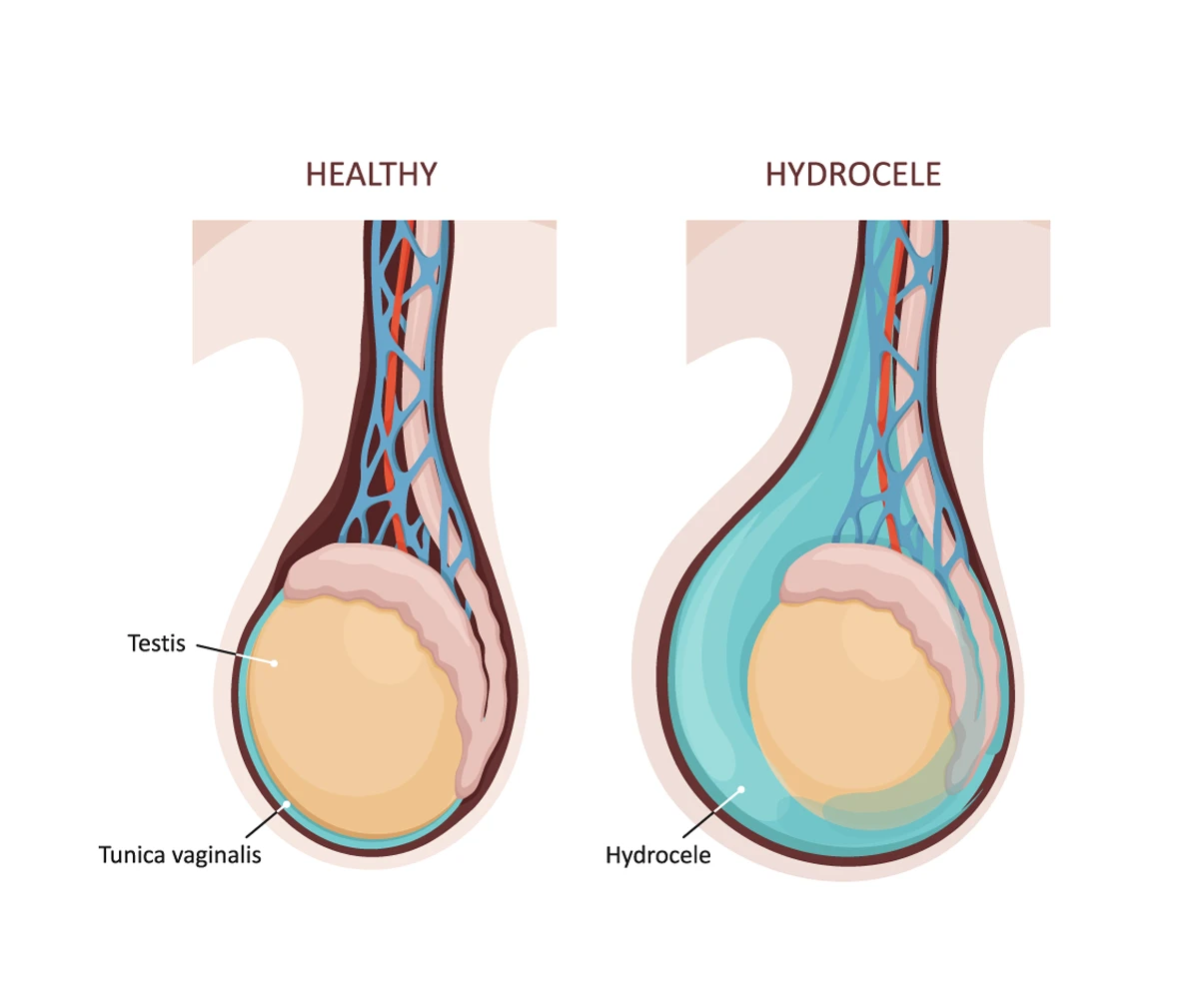Hydroceles
At Advocate Health Care, our team of experienced urologists is here to provide compassionate hydrocele care. We use the latest treatment and diagnostic testing to ensure you get the care you need.

What is a hydrocele?
A hydrocele is fluid buildup in the sac around the testicle, known as the scrotum. This fluid causes the testicles to swell in men or those assigned male at birth. Hydroceles are more common in babies and infants but can develop at any age.
Typically, hydroceles are not painful and don't pose a serious risk. Hydroceles often disappear on their own in infants within the first year of life. Babies can develop hydroceles before they are born.
In older individuals, hydroceles might persist and require medical attention, including surgery. They may also be an early sign of testicular cancer or indicate a testicular cyst. In rare cases, hydroceles can cause an inguinal hernia, which can become life threatening.
Types of hydroceles
Hydroceles are either noncommunicating or communicating hydroceles.
- Noncommunicating hydrocele: This type happens when the sac closes but the fluid isn’t absorbed by your body. Noncommunicating hydroceles may form before birth or in adults.
- Communicating hydrocele: These occur when the sac doesn’t close and allows fluid to flow in and out and into the abdomen. Communicating hydroceles often occur in fetal development.
Hydrocele causes and symptoms
Hydroceles in infants are part of the development in a mother’s womb. They form when abdominal fluid can clow into the scrotum if the sac doesn’t close. Fluid may remain in the scrotum even if the sac does close.
In older children and adults, injuries to the scrotum or an infection are typically the cause of hydroceles.
Symptoms of a hydrocele
The most common symptom is scrotal swelling on one or both sides. Other symptoms include:
- Discomfort in the groin area when sitting
- Pain in the scrotum
- Swelling that changes in size throughout the day
Diagnosis of hydroceles
Your Advocate urologist will complete a physical examination and ask about your symptoms. Most of the time, your provider can diagnose hydroceles just from a physical exam.
During the exam, your provider may apply pressure to the groin area and ask you to cough to examine the swelling. This is used to rule out inguinal hernias or testicular hernias.
In some cases, your provider may order imaging tests to confirm their hydrocele diagnosis, such as a CT scan, ultrasound or X-rays.
Hydrocele treatment options
A hydrocele will go away on its own and not require any treatment in most cases. If it doesn’t go away on its own, your hydrocele may require same-day surgery to drain the fluid buildup in the scrotum.
Even if you aren’t in pain or have any discomfort, It’s a good idea to have your provider check a hydrocele because it can lead to serious complications, such as a testicular cyst, tumor or inguinal hernia.
Learn more about treatment options.
Get care
We help you live well. And we’re here for you in person and online.
